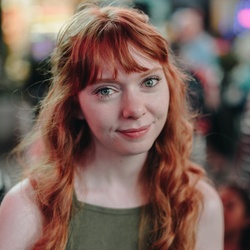Over the past decade, the number of self-proclaimed photography “educators” online has exploded. With a few clicks and a decent-looking website, anyone can market themselves as a teacher. Many photographers have turned to education as a side income, and some have built thriving communities and valuable programs. Others, however, are selling generic, recycled advice at premium prices without offering real expertise or ongoing support.
The Rise of the One-Off Course Seller
Course creation has never been easier. With platforms like Teachable, Kajabi, and even simple Google Docs, a person can package together a few videos, slides, or PDFs and label it a photography course. The barrier to entry is nearly nonexistent. This is both empowering and risky for learners.
A Market Flooded With Photography 'Educators'
For photographers seeking education, it means the market is flooded with options. Some of these options are worth every penny. Others are little more than surface-level information you could gather yourself with a targeted YouTube search or a couple of evenings on Google.
Course-Sellers vs. True Photography Education
This ease of creation has resulted in a growing number of one-off course sellers. They design a single course, market it aggressively, and then move on to the next product launch. There is little or no follow-up for students, and certainly no guarantee of current, relevant information.
The Problem With Generic Advice for Photography Businesses
Yes, there is value in having curated, consolidated information in one place. The time you save by not digging through forums or hunting for answers across multiple sources can be significant. But many of these one-off courses provide advice so generalized it barely qualifies as teaching.
Providing Value as Opposed to Easy Answers
Consider the common tip, “Set your budget.” That might be sound guidance in theory, but without context, it is useless. How should a new freelance photographer approach budgeting? Should they consider variable seasonal income? What about accounting for equipment upgrades or insurance? A real educator breaks this down, providing tools, templates, and examples based on their own working experience.
Instead, what students often receive is vague direction without actionable steps. This leads to frustration, wasted money, and in many cases, no real change in their photography business.
When Photography Education Is Just a Sales Funnel
Another recurring problem is the heavy integration of affiliate marketing within these courses. Many educators rely on product recommendations to generate additional income. There is nothing inherently wrong with affiliate links when they are transparent and genuinely useful. The issue arises when courses are essentially built around selling products.
Using Courses to Keep Selling to Photographers
In this scenario, the course becomes little more than a polished sales pitch. The “lessons” focus on convincing students to buy specific gear, presets, or software, all of which earn the educator a commission. The student believes they are receiving professional guidance, but in reality, they are being marketed to from start to finish.
When affiliate marketing becomes the foundation of a course, the value for students drops significantly. Education should come first, and any product suggestions should serve the curriculum, not drive it.
What Real Online Photography Education Looks Like
There are absolutely educators out there doing it right. They keep their materials current, offer ongoing support, and maintain a real photography business alongside their teaching. This is where names like Ben Hartley and Katelyn James stand out.
Thriving Photo Education Communities for Newbies and Pros Alike
Both run successful photography businesses, which means their advice comes from real, current experience. They also understand that education is more than a one-time transaction. Students who invest in their programs gain access to thriving communities, updated resources, and continued opportunities for learning. Their materials evolve with the industry. New courses are released. Old courses are refreshed. The community spaces they run are active and supportive.
This is what separates true educators from those who simply create a course once and market it until the sales slow down.
The Community Factor in Photography Education Online
One of the clearest indicators of a worthwhile investment in education is the presence of a real community. This might be a private Facebook group, ongoing live Q&A calls, or even one-on-one mentorship opportunities. Communities offer a place for students to ask questions, troubleshoot, and learn not only from the educator but also from their peers.
The difference is significant. A one-off course seller will take your payment and deliver static content. A genuine educator will create a space where your growth can continue long after you finish the last lesson.
Improving and Refining Courses and Downloads
These communities also allow educators to get direct feedback from students, which helps them refine and improve their programs. This feedback loop is something the one-and-done course creator rarely experiences, which is why their offerings often feel outdated or disconnected from the realities of working photographers.
The Zero-Barrier Problem
The ease of creating digital products means anyone can brand themselves as an expert. With a polished Instagram feed, a few styled shoots, and some marketing savvy, a person can give the impression of being highly experienced without ever having run a sustainable photography business.
This is why it is so important to vet anyone you consider learning from. Ask yourself:
-
What is their real-world photography experience?
-
Are they actively working as a professional photographer right now?
-
Can they provide examples of successful client work?
-
Have they ever run a full-time photography business, or is their entire business model selling courses?
If they cannot demonstrate a history of doing the work they are teaching, be cautious. Education should be rooted in proven, lived experience, not just theory.
How to Protect Your Investment in Education
When considering whether to buy a course, slow down and do your research. Look for reviews that are not just testimonials featured on the educator’s own site. Seek out independent feedback from people who have taken the course and can speak honestly about its value.
Do Your Due Diligence When it Comes to Purchasing Courses
Compare the course outline to free resources. If most of the topics covered are things you can easily find on YouTube, in blogs, or through photography communities you already belong to, you might be better off investing your time rather than your money.
Pay Attention to the Community Element
Ask about updates. Does the course material stay current with trends and technology? If the content was created five years ago and has not been revised, chances are much of it is outdated. Finally, pay attention to how the educator communicates before you buy. Are they responsive to questions? Do they offer sample lessons or a preview of the curriculum? Transparency is a strong sign they have nothing to hide.
Invest in Education That Gives Back
Photography education can absolutely be worth the investment. The right program can accelerate your growth, expand your skills, and help you build a more successful business. But it is important to be intentional about where your money goes.
Find Online Educators That Engage With Students
Seek out educators who are actively engaged with their students, maintain thriving communities, and regularly update their content. Value real-world experience over slick marketing. If an educator’s only business is selling to other photographers, consider what that says about their ability to teach you how to run a sustainable photography career.
Want to Know Whether to Buy the Course? The Answer is Likely 'No'
Before you hit “buy” on another course, ask yourself if you are investing in genuine growth or simply helping someone else fund their next product launch. The best education is rooted in experience, built on trust, and supported by a community that grows with you.
At Fstoppers, we’ve built courses with working photographers that go beyond surface-level advice. They are designed by successful working photographers to help you apply proven techniques directly to your own business. If you’re serious about your growth, our education is created to give back long after the first lesson ends.









The best course that I have found for beginner photographers is "Fundamentals of Photography" by John Greengo. It is available at creativelive.com. It is 25 hours in length, so it is a commitment. He also offers a 6-hour updated version called "Photography Essentials" on his website johngreengo.com. He is a great educator and gives very clear explanations and examples. I highly recommend any of his classes.
Now that's interesting.
My previous comment was deleted and the article was edited. Why? Did I say something wrong?
Fstoppers Editor and owner are mostly about making money from this website. If they think that content here will impair their ability to sell tutorials and get our money, then they will remove it or edit it. If you notice, the edited part of this article includes a plug for Fstoppers tutorials. Again, it really does seem that their primary concern is about making money.
"No you don't need to buy another course. Click here to buy our photography courses."
Yup. It wasn't written that way by the author, but someone came in and edited the original article to make it a plug for their for-sale courses.
I have also heard of writers here who have submitted articles with factually true, straightforward titles being told to change the title to something more clickbaitish, in order to generate more page views.
So many articles here lambaste social media for becoming nothing but a chasing of likes and page clicks. Hmmmmm. I would like to see Fstoppers not do anything even close to what they so frequently lambaste in their articles. Avoiding even the slightest appearance of hypocrisy would be commendable.
One can make plenty of money without going out of one's way to try to make more money. Just putting honest content out, without trying to shape it in such a way as to generate more income, will still result in plenty of revenue for the site.
The part about Fstoppers tutorial was there before the edit.
The paragraph titled "What Real Online Photography Education Looks Like" had links to websites of the mentioned people and those were removed. I commented that those websites are weirdly similar.
Richard B wrote:
"The part about Fstoppers tutorial was there before the edit."
Yes, but it was worded quite differently.
In the original article, pre-edit, the mention of Fstoppers tutorials was in a "by the way" style, and only one sentence in the final paragraph mentioned them.
In this new, edited version of the article, the entire final paragraph is about the Fstoppers tutorials, so the total mention of the tutorials went from one sentence to three sentences.
Obviously they are re-writing things in an attempt to get more money.
Double.
Every since I first got my film Canon Ftb I needed to know how but never found away just clicked and waited. The bad part was it had a light meter built and only putting the aperture circle needle over the meter needle I never learned much about a aperture setting. Not even after the digital of my Canon T2i when I thought the higher the aperture setting the more detailed but really i was more of a auto setting photographer BUT that is how I learned the triangle of light settings. And not till I got to my Sony A7SM1 with its very high ISO it so famous for did I find a chart on line of SS, Aperture and ISO settings in the two different settings of camera settings did I start playing with Bracketing mainly of moons at different lens mm'ers ah the most smallest moon using a 12mm and fully in focus. But really the first digital cameras only went to ISO 6400 but could be extended up a few and were noisy as heck and no way to get rid of.
Yes the rule of thirds and other rules are what your photo eye sees when no others do not. Like do you see things in clouds or ripples in water or can you walk in the woods and see the deer laying down like children can. It what YOU see that is interesting to YOU that is all it is all about. In the digital and you edit you will find editing the same image over and over even in the same editing program you will never get the same image SO you are the artist and your end result is your and only yours no if or buts from anyone mean anything only you care.
What I an saying is no one even can tell or say how or when or where you go as to what is best to do. You look a see what you like and remember the one important thing all photographers are
"MAD SCIENTIST" of light works so become one and see what others do not!!
#1 faces in oil water next to USS Arizona, a person several years later became famous when posting their image on line.
#2 the horse head and riders head and Indian Chief inside not even the tour guide and photographer of ten years ever saw.
#3 kids made this look like a serpent with toys that few if any noticed when driving by.
#4 I saw Venus and aimed my camera at it and did a 30s exposure and then saw what could not see while under a street light aiming over my neighbors house.
The "MAD SCIENTIST" lives!!!!
Can you name the parts of the Milky Way above the Galactic Center bright white spot? and the cycle from Feb to Nov of when, and where and that a new moon is at the beginning of all months one year and at the end the next year, you will be all alone when you find out!!